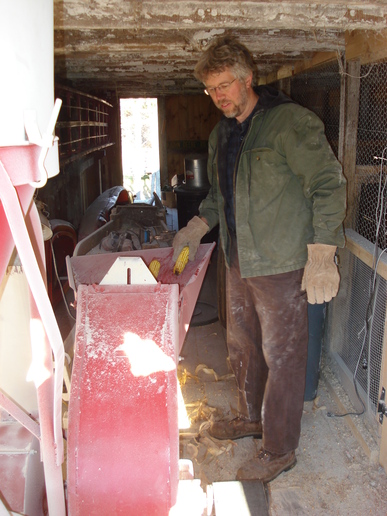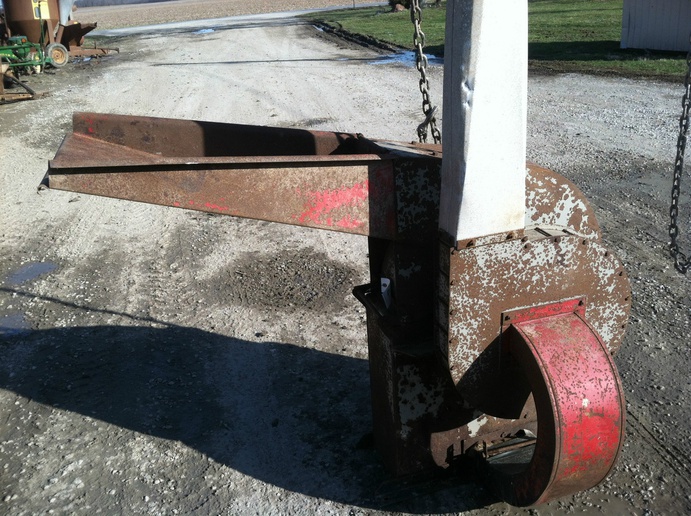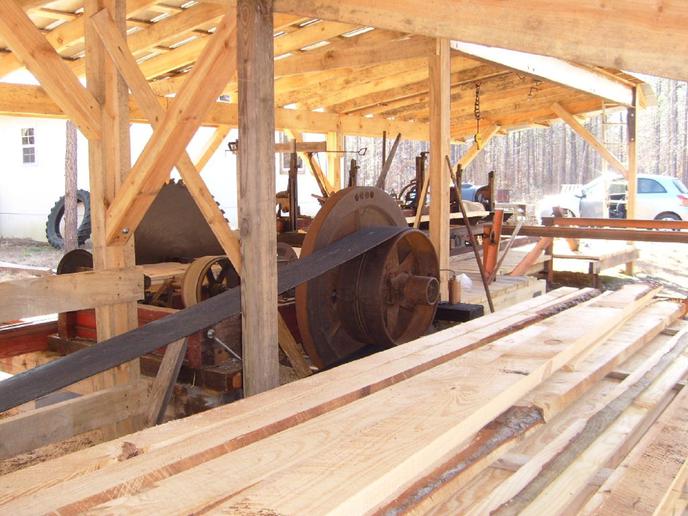You should upgrade or use an alternative browser.
- Thread starter Daninsc
- Start date
gene bender
Well-known Member
rustred
Well-known Member
Janicholson
Well-known Member
A solid article.
JimB2
Well-known Member
- Location
- Ottawa, Ontario, Canada
The hammer mill was installed on the east side of the barn in the granary but if the wind was blowing from the north, it was impossible to keep the belt on pulley of the JD 420. On the 300U, B414 and the 454 we could flip the drive pulley and run a crossed belt in the wind.
JimB
rusty6
Well-known Member
- Location
- East central Sask.
http://www.youtube.com/watch?v=CzzxmTclK8g
JimB2
Well-known Member
- Location
- Ottawa, Ontario, Canada
JimB
rusty6
Well-known Member
- Location
- East central Sask.
BushogPapa
Well-known Member
One thing not mentioned by the others is to hang a chain from the tractor, to the ground, to Ground it and prevent static electricity from building up and shocking the crap out of you..!!!
Ron..
fixerupper
Well-known Member
rusty6
Well-known Member
- Location
- East central Sask.
That is interesting. I have never used a grounding chain and never seen or felt any indication of static electricity . And I am normally very sensitive to that. Maybe something to do with having a fibre pulley on my tractors?(quoted from post at 20:15:00 03/19/13)
One thing not mentioned by the others is to hang a chain from the tractor, to the ground, to Ground it and prevent static electricity from building up and shocking the crap out of you..!!!
Ron..
A longer belt will have a lot of tension on the pulleys just due to the weight of the belt. It doesn't have to be stretched tight as one may think.
(assuming you go with a reasonably long belt)
You just need enough tension to keep the belt well off the ground and you should be good to go. Don't over do it, more isn't always better.
I'll try to figure out how long the one is that we use - I want to say 25 feet pulley to pulley - but I'll check later.
For width - not super critical for a hammer mill. They tend to clog if you overload them anyways, so slippage isn't a huge concern.
Anything slightly less than the width of the smallest pulley - but more than half.
Try to get the pulleys in line with eachother the best you can, but don't kill yourself. The pulleys have a rounded surface (side to side) that helps keep the belts centered when running, even if you're off a little.
Hammer mills sound like jet engines once they get spinning. You'll love it once you fire it up.
Kind of surprising, the belt looks like it's going slow, but the sound of those hammers flying around will keep you on your toes, being a constant reminder to keep your hands well away from the feed hole.
I don't know what you plan to grind, but unless you want to be blowing it out of your nose for the next three days - get a dust mask!
If it's not obvious - the "hammers" should be reversible - if the leading edge corners of yours are rounded, it'll work better if you flip them and get sharp edges.
I looked, but all I can find is one picture of me grinding corn. Not a very good shot of the mill or the setup. Might have more elsewhere - if I find any I'll post.
Very similar mill - they're all pretty much the same design. If you look closely at the bottom you can see the width of the belt we use.

Similar threads
- Replies
- 6
- Views
- 445
- Replies
- 4
- Views
- 889
- Replies
- 2
- Views
- 356
We sell tractor parts! We have the parts you need to repair your tractor - the right parts. Our low prices and years of research make us your best choice when you need parts. Shop Online Today.
Copyright © 1997-2024 Yesterday's Tractor Co.
All Rights Reserved. Reproduction of any part of this website, including design and content, without written permission is strictly prohibited. Trade Marks and Trade Names contained and used in this Website are those of others, and are used in this Website in a descriptive sense to refer to the products of others. Use of this Web site constitutes acceptance of our User Agreement and Privacy Policy TRADEMARK DISCLAIMER: Tradenames and Trademarks referred to within Yesterday's Tractor Co. products and within the Yesterday's Tractor Co. websites are the property of their respective trademark holders. None of these trademark holders are affiliated with Yesterday's Tractor Co., our products, or our website nor are we sponsored by them. John Deere and its logos are the registered trademarks of the John Deere Corporation. Agco, Agco Allis, White, Massey Ferguson and their logos are the registered trademarks of AGCO Corporation. Case, Case-IH, Farmall, International Harvester, New Holland and their logos are registered trademarks of CNH Global N.V.
Yesterday's Tractors - Antique Tractor Headquarters
Website Accessibility Policy



